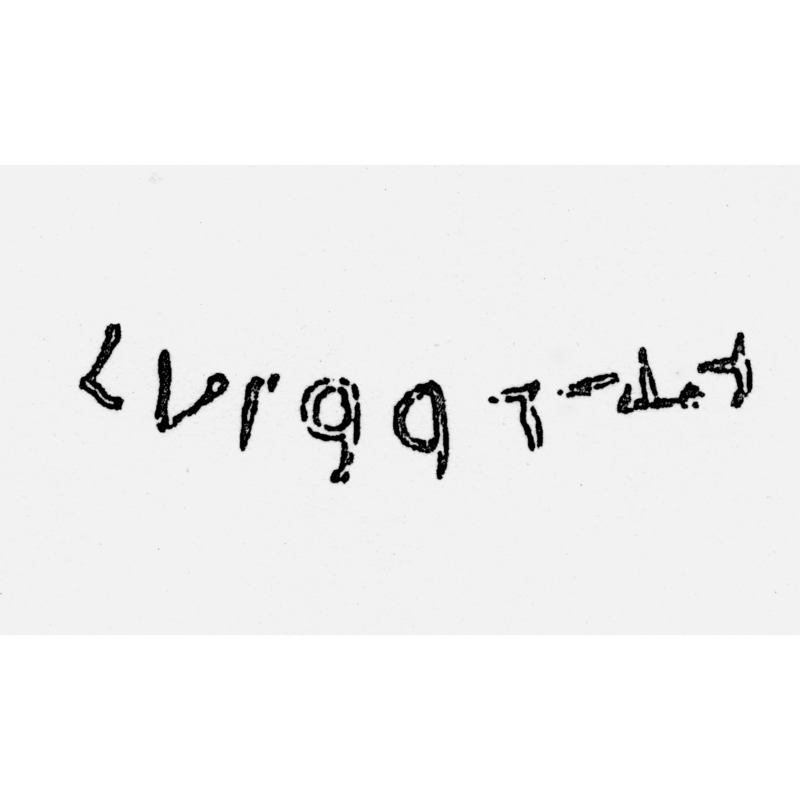Defynnog No. 1 / Devynock

Image copyright © [in the public domain]
PD
Results: 10 records
B01: symbol - cross - saltire
B02: design element - motifs - button-hole, vertical
BBU01: design element - motifs - oval
LB01: design element - motifs - moulding - flat moulding
LB02: design element - motifs - leaf - 4
Scene Description: one at angle of the lower base or plinth; appear as fleur-de-lis in Westwood (1876-1879)
Copyright Statement: Image copyright © Lord, 2003
Image Source: detail of a photograph in Lord, in Diwylliant... (1998-2003 vol. 3: fig. 56)
Copyright Instructions: PERMISSION NOT AVAILABLE -- IMAGE NOT FOR PUBLIC USE
R01: inscription
view of base - detail
view of font
view of font
INFORMATION
FontID: 09113DEF
Object Type: Baptismal Font1
Church/Chapel: Parish Church of St. Cynog
Church Patron Saints: St. Cynog [aka Canog, Cynog ap Brychan, Kennauc, Mocheanog]
Country Name: Wales
Location: Powys
Directions to Site: Located at the confluence of the A4067and the A4215, just S of Sennybridge and the A40, 15 km W of Brecon
Historical Region: formerly Breconshire
Font Location in Church: Inside the church
Century and Period: 11th century / 13th century (early?), Medieval
Font Notes:
Click to view
Described and illustrated In Westwood (1976-1879) with measurements [NB: Westwood spells the name "Devynock"], who writes of the inscription on the upper rim surface: "I am entirely incapable of deciphering , or even of determining whether it may not be intended to be read in an inverted position. The characters are sufficiently deep and clear, so as not to admit of any doubt as to most of their forms." Described and illustrated by Peter Lord in Diwylliant... (1998-2003) as a composite baptismal font consisting of three parts: the basin proper, a smallish shallow cylindrical bowl carved with circles, vertical button-holes and saltires around the sides and bearing an inscription on the upper surface of the rim that includes the name "Siwvrd Gwlmer". Lord (ibid.) informs that although the lettering has been commonly described as Runic in the past, it has been identified as Lombardic capitals by Rosamund Moon (Arch. Camb., CXXVII, 1978: 124-126). Lord (ibid.) makes reference also to a stone bearing an inscription that appears related to the above name; it is on a tomb stone catalogued and illustrated in Nash-Williams (1950), and the inscription reads: "HIC IACET [S]I[U(?)]LERD [F]ILIVS / VVLMER", where it is dated 11th-12th century. The base of the Defynnog font appears to be an inverted font basin, bucket-shaped and girdled with a flat moulding' The lower base is a common combination of a round upper volume with three-leaf motif at 90-degree angles that coincide with the corners of the square lower volume [cf. for instance the lower base of the font at St. Woolos' cathedral in Newport, or other Herefordshire School sculpture of the same period]. Thurlby (2006) rejects the 11th-century date claim and adds: "the leaves at Defynnog recall nothing better than a single stiff-leaf characteristic of early Gothic capitals of the late twelfth and early thirteenth century. This would also suit interpretation of early raised diagonal crosses on the bowl as a flattened version of dog-tooth ornament." [cf. Index entry for Defynnog No. 2 for an early holy-water stoup in the same church]
MEDIUM AND MEASUREMENTS
Material: stone
Number of Pieces: three
Font Shape: cylindrical (mounted)
Basin Interior Shape: round
Basin Exterior Shape: round
Rim Thickness: 6.5 - 7 cm [calculated]
Diameter (inside rim): 36.25 cm*
Diameter (includes rim): 50 cm*
Height of Basin Side: 17.5 cm*
Height of Base: 55 cm*
Font Height (less Plinth): 85 cm*
Square Base Dimensions: 65 x 65 cm*
Notes on Measurements: *[in Westwood (1876-1879: 72) in Imperial measures]
INSCRIPTION
Inscription Notes: Full transcription not available [cf. FontNotes about related name]. The inscription is illustrated in Westwood. Moon identifies as Lombardic capitals, according to Lord.
Inscription Location: on the upper surface of the rim
Inscription Text: "[...] SIWvRD GWELMER [...]"
Inscription Source: Illustrated in Westwood (1876-1879: pl. XLI fig.3); the text is from Lord, in Diwylliant... (1998-2003, vol. 3, p. 48 and fn 92)
REFERENCES
The Visual Culture of Wales = Diwylliant gweledol Cymru, Cardiff: University of Wales Press, 1998-2003
Nash-Williams, Victor Erle, The Early Christian Monuments of Wales, Cardiff: University of Wales Press, 1950
Thurlby, Malcolm, Romanesque architecture and sculpture in Wales, Little Logaston, Woonton, Almeley, Herts.: Logaston Press, 2006
Westwod, John Obadiah, Lapidarium Walliæ: the Early Inscribed and Sculptured Stones of Wales, delineated and described, Oxford: Printed at the University Press for the Cambrian Archælogical Association, 1976-1879

